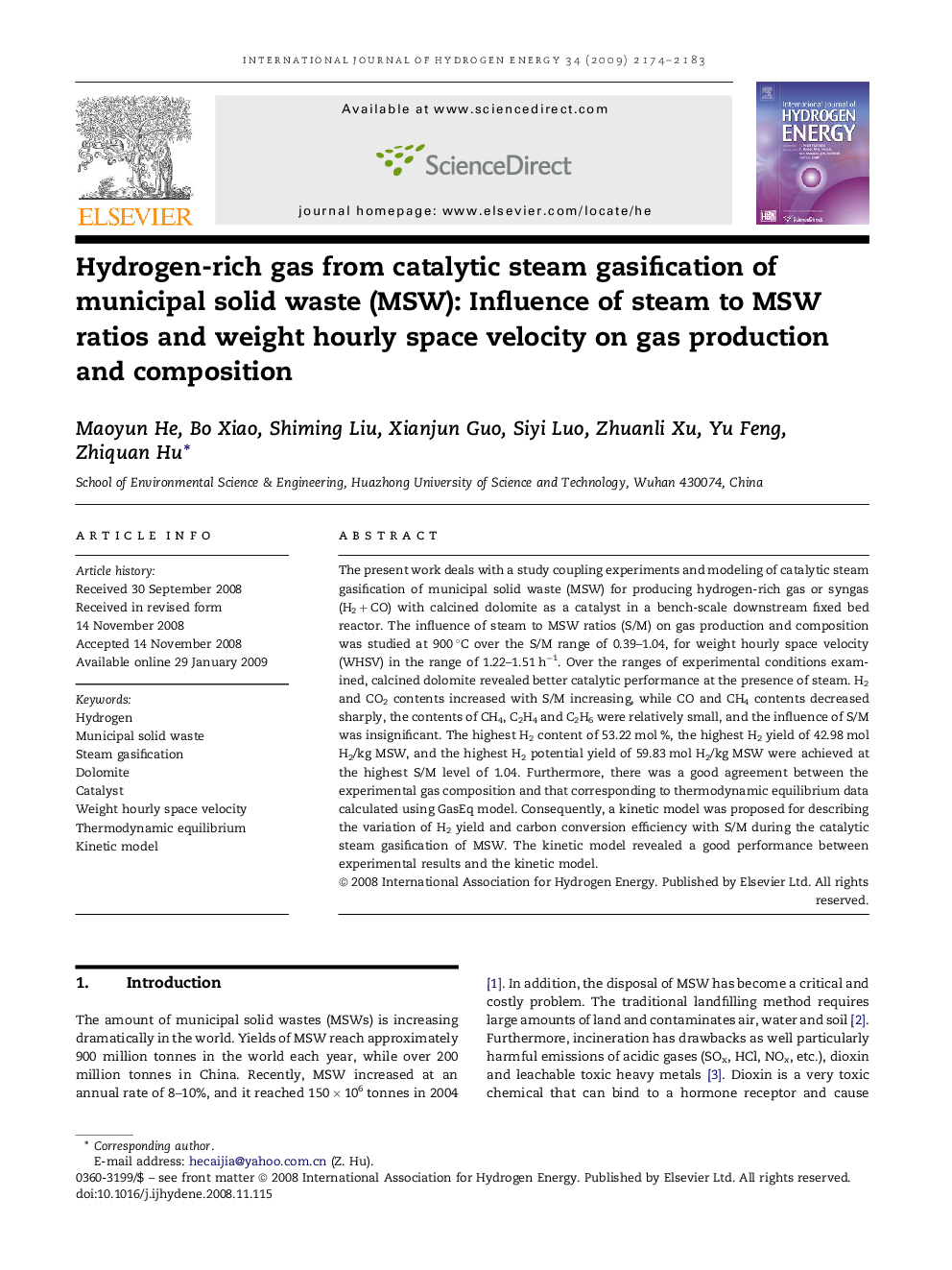| Article ID | Journal | Published Year | Pages | File Type |
|---|---|---|---|---|
| 1283272 | International Journal of Hydrogen Energy | 2009 | 10 Pages |
The present work deals with a study coupling experiments and modeling of catalytic steam gasification of municipal solid waste (MSW) for producing hydrogen-rich gas or syngas (H2 + CO) with calcined dolomite as a catalyst in a bench-scale downstream fixed bed reactor. The influence of steam to MSW ratios (S/M) on gas production and composition was studied at 900 °C over the S/M range of 0.39–1.04, for weight hourly space velocity (WHSV) in the range of 1.22–1.51 h−1. Over the ranges of experimental conditions examined, calcined dolomite revealed better catalytic performance at the presence of steam. H2 and CO2 contents increased with S/M increasing, while CO and CH4 contents decreased sharply, the contents of CH4, C2H4 and C2H6 were relatively small, and the influence of S/M was insignificant. The highest H2 content of 53.22 mol %, the highest H2 yield of 42.98 mol H2/kg MSW, and the highest H2 potential yield of 59.83 mol H2/kg MSW were achieved at the highest S/M level of 1.04. Furthermore, there was a good agreement between the experimental gas composition and that corresponding to thermodynamic equilibrium data calculated using GasEq model. Consequently, a kinetic model was proposed for describing the variation of H2 yield and carbon conversion efficiency with S/M during the catalytic steam gasification of MSW. The kinetic model revealed a good performance between experimental results and the kinetic model.
